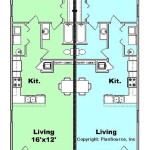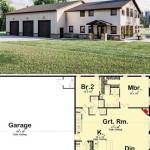```html
How to Find the Floor Plan of Your House
Obtaining a floor plan for a house can be crucial for various reasons, ranging from planning renovations and landscaping projects to simply understanding the spatial relationships within the dwelling. A floor plan provides a scaled diagram of each room in a home, showing the layout of walls, doors, windows, and often built-in features like cabinets and staircases. Several avenues exist for locating or recreating this valuable documentation. The optimal method will depend on the age of the house, its location, and any existing documentation available.
Understanding the potential sources for house floor plans can significantly streamline the search process. These sources can broadly be categorized into official records, developer archives, homeowner associations, and, as a last resort, professional creation.
Exploring Official Records and Government Archives
The most reliable starting point for locating a house floor plan is often the local government. Building departments or planning offices frequently maintain archives of construction permits and associated documents. These records, typically organized by address, may contain the original blueprints submitted during the construction phase of the house. Accessing these records often requires a visit to the relevant municipal office or searching their online database, if one exists. The specific procedures and fees for accessing these documents will vary depending on the jurisdiction.
Furthermore, assessor's offices, responsible for property tax assessments, might have simplified floor plans or sketches on file. These plans are generally less detailed than architectural blueprints but can provide a basic understanding of the layout and dimensions of the house. While not ideal for complex renovation projects, they can serve as a helpful starting point. Access to assessor's records is typically public information, although online access may be restricted or require registration.
Title companies, involved in property transactions, may also possess copies of surveys or plats that depict the property boundaries and the house's footprint. While a survey typically does not include interior details, it provides external dimensions and the overall shape of the house, which can be useful in conjunction with other information. Obtaining this information might require contacting the title company involved in the most recent property sale.
Leveraging Developer Archives and Homeowner Associations
For houses located in planned communities or subdivisions, the original developer often maintains archives of construction plans, including floor plans for various house models. Contacting the developer’s office, if it still exists, or researching its successor company could yield valuable information. Developer archives often contain detailed blueprints and specifications for all the houses built within the development.
Homeowner associations (HOAs) also sometimes maintain records of approved architectural plans and modifications. If the house is subject to HOA rules, contacting the HOA management office or reviewing the HOA's document repository might uncover existing floor plans. However, accessing these records may require membership or approval from the HOA board, and the availability of floor plans is not guaranteed.
In cases where the house was built relatively recently, contacting the original builder directly may also be a fruitful avenue. The builder might retain copies of the floor plans for marketing or warranty purposes. This approach is particularly useful if the house is part of a larger development where the builder used standardized floor plans.
Creating a Floor Plan When Documentation is Unavailable
If all other avenues fail to produce an existing floor plan, creating one from scratch becomes necessary. This process can be accomplished using various methods, ranging from manual measurement and drafting to employing professional architectural services or utilizing digital floor plan software.
The most basic approach involves manually measuring the dimensions of each room and drawing a scaled diagram on paper. This method requires accuracy in measurement and attention to detail to ensure the final floor plan accurately reflects the house's layout. It is advisable to use a laser measuring tool for increased accuracy, especially for larger rooms or complex layouts. The manual approach is suitable for simple house designs but can become cumbersome for intricate floor plans with numerous angles and features.
Alternatively, several digital floor plan software programs are available that simplify the creation process. These programs allow users to input measurements and automatically generate a scaled floor plan. Some software packages even offer features like 3D modeling and virtual tours. These tools range in price and complexity, with options suitable for both novice and experienced users. Popular digital floor plan software includes online platforms and downloadable applications that run on computers or mobile devices.
Another option is to hire a professional architect or draftsperson to create a floor plan. This approach is the most accurate and comprehensive but also the most expensive. A professional will visit the house, take detailed measurements, and create a precise and detailed floor plan that can be used for renovation planning or other purposes. Hiring a professional is particularly recommended for complex house designs or when accurate measurements are critical, such as for structural modifications or obtaining building permits.
When recreating a floor plan, it is crucial to accurately depict the location of load-bearing walls, plumbing fixtures, electrical outlets, and other essential features. This information is crucial for future renovations or repairs. If unsure about the location or function of specific features, consulting with a qualified contractor or engineer is recommended.
Regardless of the method used, verifying the accuracy of the floor plan is essential. Double-checking measurements and comparing the plan to the actual house layout can help identify any discrepancies. Addressing these discrepancies early on can prevent costly mistakes in future renovation projects.
In conclusion, finding the floor plan of a house can be achieved through various means. Starting with official records and exploring developer archives and HOA resources are ideal initial steps. When these avenues prove unsuccessful, manual measurement, digital floor plan software, or professional architectural services offer viable alternatives for creating an accurate representation of the house's layout.
```
12 Examples Of Floor Plans With Dimensions

Create And Visualize House Plans In Minutes Roomsketcher

12 Examples Of Floor Plans With Dimensions

Create Floor Plan

Tips For Selecting The Right Floor Plan Your Home Sater Design Collection

Floor Plans Learn How To Design And Plan

How To Find The Original Floor Plans For Your House

Free Floor Plan Creator Design 2d 3d Layouts Easily

How To Draw A Floor Plan Live Home 3d

How To Read A Floor Plan Hensley Custom Building Group
Related Posts








